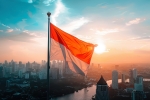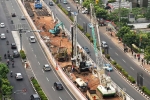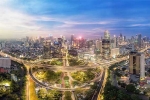Maritime highway unlocks new economic potential
This article has been translated by PwC Indonesia as part of our Indonesia Infrastructure News Service. PwC Indonesia has not checked the accuracy of, and accepts no responsibility for the content.
Investor Daily - Tol laut buka potensi ekonomi baru
2 October 2024
By Ichsan Amin
Jakarta, ID – The government continues to improve the maritime highway programme that has been operational for the past ten years. This maritime highway programme is expected to reduce price disparities and reach the remotest areas in Indonesia.
Transportation Minister Budi Karya Sumadi mentioned that the current development of the maritime highway programme is becoming more efficient through the creation of a hub and spoke system, enabling the emergence of new economies in the areas accessible by the maritime highway.
"We have found a format where its implementation is getting better with the creation of the hub and spoke system. This means we provide subsidies through feeder ships, while the hubs are commercial. If this continues, it is not impossible that new economic centres will emerge," said Transportation Minister Budi Karya at a press conference at the Transportation Ministry on Tuesday (01/10/2024).
Transportation Minister Budi Karya explained that during its ten years of operation, this programme has experienced significant improvement in terms of the number of routes, cargo, and ship fleets. This is indicated by an increase in cargo volume, number of ships, and number of routes.
"The cargo volume has developed from 30 tonnes and 88 TEUs in 2015 to 989.75 tonnes and 31,878 TEUs in 2023. The number of ships has grown from 3 ships in 2015 to 39 ships in 2024," he said.
Moreover, the number of routes has also expanded from three routes in 2015 to 39 routes in 2024. The number of calling ports has increased from 11 ports in 2015 to 114 ports in 2024.
"We continue to make improvements and evaluations to ensure that the programme is appropriately, effectively, and efficiently utilised," he added.
Throughout its journey, the Transportation Ministry has also actively sought input from stakeholders, including public feedback. "We discuss with INSA (Indonesian National Shipowners' Association) to see which routes need subsidies and which can be commercial. Once a route can be commercialised, we shift the subsidy to another route," the Transportation Minister explained.
He added that the presence of the maritime highway has opened new economic opportunities in the areas it passes through, which previously struggled due to limited transport access. Furthermore, the maritime highway serves as a humanitarian bridge connecting all corners of the country, especially in supporting religious holidays and transporting humanitarian aid and disaster relief.
"As a logistics transportation tool, the maritime highway not only distributes goods to these regions but also brings back local products, creating a healthy and sustainable economic cycle," he concluded.
Meanwhile, the Director General of Land Transportation at the Transportation Ministry, Capt. Antoni Arief Priadi, said his agency continues to encourage collaboration with local governments to maximise the programme's function.
"We empower everyone, especially local governments, to play an active role. Because the maritime highway programme is very beneficial, allowing natural products from remote areas to be sent to Java," he said.
He added that the collaboration between central and local governments in this programme can unlock new economic potentials in the regions, making it possible for them to develop further.
"We hope that new economic centres will emerge through this maritime highway programme. [Indonesia] has more than 17,000 islands. Reaching them all is very important, and the maritime highway is one way to achieve this," he concluded.
Maritime Outlet Synergy
Meanwhile, to support the integration of the maritime highway programme, the Trade Ministry continues to empower the Maritime Outlet Synergy (SIGM). The Director General of Domestic Trade at the Trade Ministry, Moga Simatupang, said that SIGM includes building depots in several regions and conducting business meetings involving business players from various regions.
"SIGM includes building depots in an area and conducting regional business meetings. To enhance SME [small and medium enterprises] products, we have organised business forums by the Regional Chamber of Commerce and Industry. We bring together business players in a certain region and connect them with business players in another region," Moga said.
He explained that the integration of the maritime highway programme with SIGM positively impacts the local economy and provides more equitable access to basic commodities and important commodities. The efficiency of the maritime highway has helped to stabilise prices across regions by accelerating the distribution of goods.
"If we look back, the maritime highway is based on a presidential regulation, which we then translate into regulations at the Ministry of Trade. There are 11 basic commodities, 7 important commodities, and 32 other commodities that are subject to the maritime highway distribution regulation," he said.
One of the main targets of launching the maritime highway is to address price disparities across various regions in Indonesia. The positive effect of reducing these price disparities is more significant in Eastern Indonesia, which has faced greater logistics challenges compared to other regions.
"In the development of the maritime highway, the variation coefficient as an indicator of price disparity between regions and over time has shown a significant decrease. In 2015, the variation coefficient was 14.2%, while in 2024 it decreased to 10.25%," he disclosed.
Contact us















